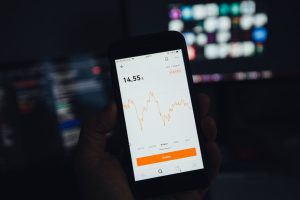Forex trading is an exciting and potentially profitable venture, but it is not without its risks. One of the most important aspects of becoming a successful trader is learning how to manage risk. This involves developing a good understanding of the risks involved in trading, as well as implementing strategies and techniques to minimize those risks.
The first step in managing risk in Forex trading is to understand the different types of risk that are present in the market. The most obvious form of risk is market risk, which is the risk of losing money due to adverse movements in the market. This can be caused by a variety of factors, including economic data releases, geopolitical events, and changes in interest rates.
Another type of risk that is present in Forex trading is credit risk, which is the risk of losing money due to the failure of a counterparty to fulfill their obligations. This can occur when trading with a broker or financial institution that becomes insolvent, or when trading with a counterparty that defaults on their obligations.
Operational risk is also present in Forex trading and refers to the risk of loss due to errors or malfunctions in the trading system or infrastructure. This can include technical issues, such as internet connectivity or server downtime, as well as human errors, such as incorrect order placement or trade execution.
To manage these risks, traders must implement a range of strategies and techniques. One of the most important steps is to develop a clear trading plan that outlines the trader’s goals, risk tolerance, and strategies for managing risk.
Traders should also use stop-loss orders, which are automatic orders that close out a trade when the price reaches a predetermined level. This can help limit losses and prevent the trader from experiencing catastrophic losses.
Another strategy for managing risk is to diversify the trading portfolio. This involves spreading the risk across multiple currency pairs and markets, rather than concentrating all trades in a single currency pair or market.
Traders can also use leverage to manage risk, but this must be done carefully. While leverage can amplify profits, it can also amplify losses. Traders must be aware of the risks involved and use leverage responsibly, taking into account their risk tolerance and available capital.
Risk management in Forex trading is an ongoing process that requires continuous monitoring and adjustment. Traders should regularly review their trading plan and adjust their strategies as necessary to adapt to changing market conditions.
In addition to these strategies, traders can also use a range of tools and resources to help manage risk. These can include technical analysis tools, such as trend lines and moving averages, as well as fundamental analysis tools, such as economic calendars and news feeds.
Traders can also use risk management software and platforms, such as risk management calculators, position sizing tools, and trading journals. These tools can help traders assess the risk associated with each trade, determine the appropriate position size, and track their performance over time.
In conclusion, managing risk is a vital aspect of Forex trading. Traders must develop a clear understanding of the risks involved in trading and implement a range of strategies and techniques to minimize those risks. By using a combination of risk management strategies, tools, and resources, traders can increase their chances of success and achieve their trading goals.






